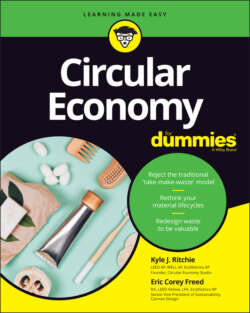Читать книгу Circular Economy For Dummies - Eric Corey Freed - Страница 57
Taking risks
ОглавлениеFor most companies, the desire to switch from a linear economy to a circular one isn’t so much about saving the planet. Ultimately, every company is a business, and a business must be economically successful and profitable. So, in order to entice companies to take a risk and transform how they do business, they need to know that, by going circular, they increase their profits.
To quote architect and futurist Buckminster Fuller (1895–1983):
You never change things by fighting the existing reality. To change something, build a new model that makes the existing model obsolete.
Companies generally see four types of value in switching from linear to circular. These benefits will encourage them to change their business models:
Sourcing: These are the direct financial gains that come from switching to a closed-loop system — where materials are looped back to be recovered or reused — including savings from reducing risk, reducing waste, and using less commoditized materials.
Environmental: These are the gains to your brand from sharing your sustainable approach with your customers.
Customer: These gains come from the product improvements to your customers in terms of repairability or reuse.
Informational: Once you start taking an active interest in how your products are being used and disposed of, you find a wealth of customer data and insights that drive future product decisions.
The best part of these drivers is that they start to encourage and feed more circular thinking. For example, as you look for ways to reduce waste, you redesign your products to be repairable. As customers bring in products to be repaired, you improve your relationship with them and gain valuable insight into their needs.
